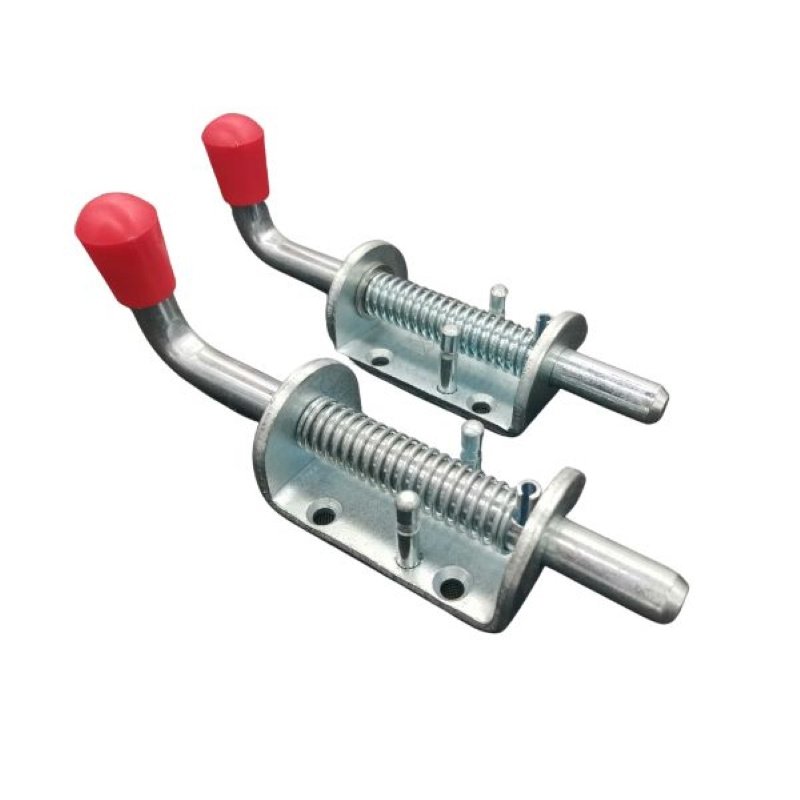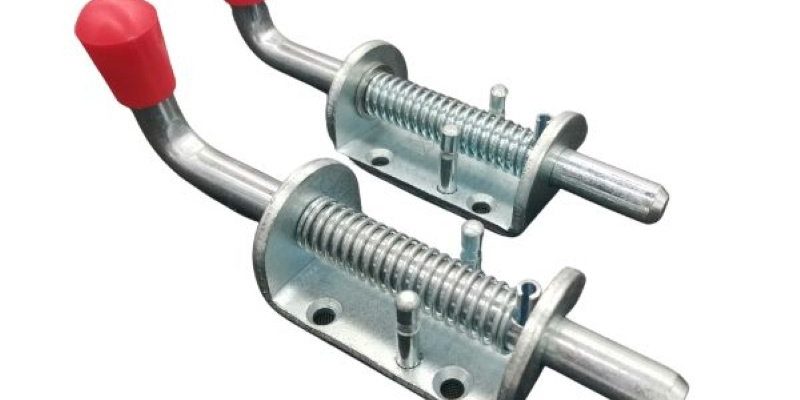
Doors come in all shapes and forms, from those classic wooden ones to modern metal varieties. And while they may look different, the core mechanics often involve the same basic components, including the latch bolt spring. Understanding how this spring works can not only help you appreciate the design of your door but also troubleshoot issues when things don’t work as they should.
Let’s dive into the world of latch bolt springs and discover what they do, why they matter, and how to keep them functioning at their best.
What is a Latch Bolt Spring?
A latch bolt spring is a crucial component of many door locking systems. This spring helps the latch bolt retract when you turn the doorknob, allowing the door to open. When you close the door, the spring pushes the latch bolt back into its resting position, securing the door in place.
Picture this: you’re at home, and with a quick turn of the knob, you can open the door to greet a friend. That ease of access is largely due to the latch bolt spring. It creates the necessary tension to pull the latch back, letting the bolt slide out of its strike plate.
Without the latch bolt spring, the door mechanism wouldn’t function properly. Instead of a smooth operation, you’d face resistance, causing frustration and potential damage to your door and hardware. So, understanding this spring isn’t just a technical detail—it’s about ensuring your door works reliably.
How Does the Latch Bolt Spring Work?
Let’s break down how the latch bolt spring functions. When you turn the doorknob, it activates a mechanism that pulls the latch bolt back. As it moves, the latch bolt spring compresses, storing energy as it gets pushed out of the latch plate.
Here’s a simplified step-by-step of the process:
- 1. Turning the Handle: You initiate the action by turning the doorknob.
- 2. Compression: The latch bolt retracts into the door as the spring compresses.
- 3. Release: Once the door opens, the spring expands, pushing the latch back into position when you close the door again.
This back-and-forth movement is what keeps your door functioning smoothly. If the spring loses its tension or gets damaged, you won’t be able to open or close the door properly. It’s like trying to stretch a rubber band that’s lost its elasticity—you just can’t get it to hold its shape.
Common Problems with Latch Bolt Springs
Just like anything else, latch bolt springs can face issues that affect how your door operates. Here are a few common problems you might encounter:
- 1. Weak Tension: Over time, springs can lose their tension, making it hard for the latch to engage.
- 2. Rust or Corrosion: If your door is exposed to moisture, rust can affect the spring’s performance.
- 3. Misalignment: Poor installation or wear and tear can cause the latch to misalign, preventing it from working correctly.
If you notice your door is sticking or not latching properly, it’s worth checking the condition of the latch bolt spring. Sometimes, a little oil can help lubricate it, but if it’s severely worn out, you might need a replacement to restore proper function.
Replacing a Damaged Latch Bolt Spring
If you’ve confirmed that your latch bolt spring needs replacing, don’t worry—it’s a straightforward process. Here’s how you can do it step by step:
- 1. Gather Tools: You’ll need a screwdriver, a replacement spring, and possibly some lubricant.
- 2. Remove the Doorknob: Unscrew the doorknob and take off the faceplate to access the latch mechanism.
- 3. Replace the Spring: Carefully pull out the old spring and replace it with the new one. Ensure it’s aligned properly.
- 4. Reassemble: Put everything back together, tighten the screws, and test the doorknob to ensure it operates smoothly.
Replacing the latch bolt spring is a simple fix that can save you from larger door problems down the line. If you’re comfortable with basic DIY tasks, you can tackle this project without needing a professional.
Why the Latch Bolt Spring Matters
You might wonder why understanding this little spring is significant. The latch bolt spring is central to your door’s security and functionality. If it fails, you could have a door that either won’t open or won’t stay closed properly—neither is ideal.
Moreover, maintaining this spring can prolong the life of your entire door mechanism. Regularly checking for wear and tear helps you catch issues before they escalate into more significant problems. It’s a small step that brings peace of mind knowing your door is secure.
Plus, knowing how your door works helps you communicate better if you need to call a professional. You can describe the issue clearly and get the right help faster.
The latch bolt spring may be a small component, but it plays a massive role in your door’s functionality and security. By understanding how it works and knowing how to maintain or replace it, you can keep your door operating smoothly.
Next time you open or close your door, take a moment to appreciate that little spring inside. It’s a simple part, but it’s essential for ensuring you can come and go with ease. Whether you’re troubleshooting, replacing it, or just keeping an eye on your door’s mechanisms, being informed gives you control over your home’s safety and comfort.
